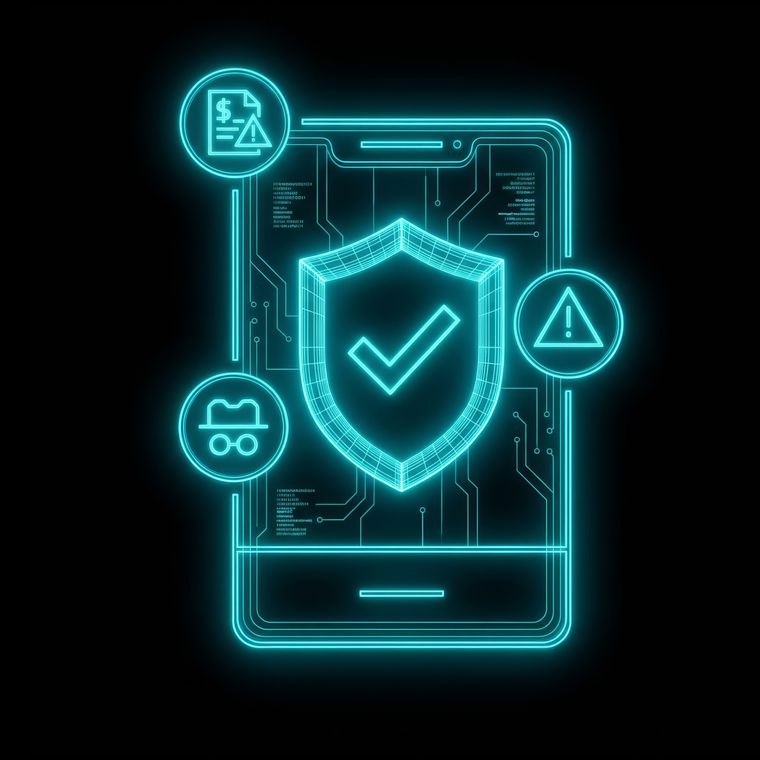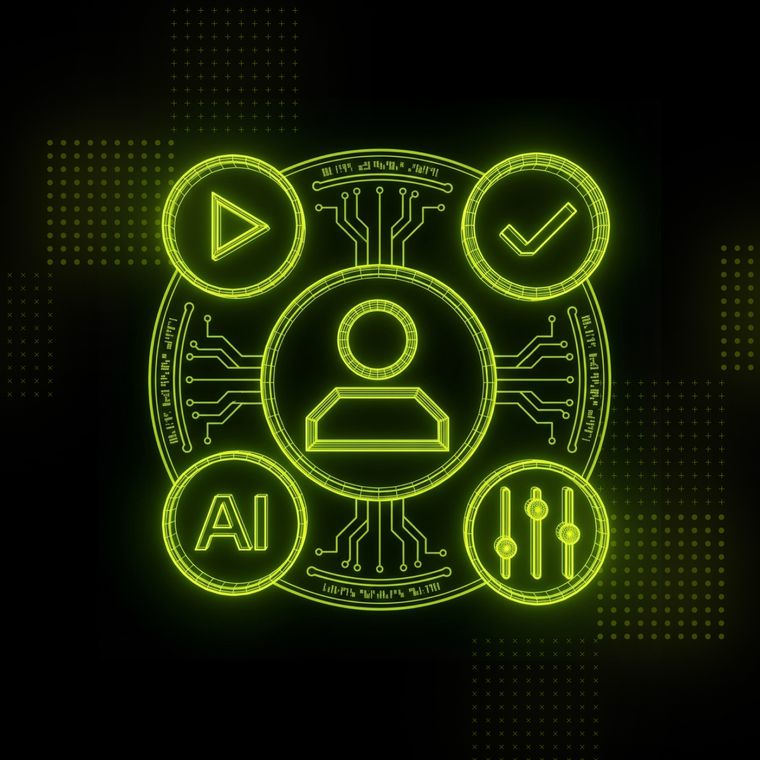A Perfect Copy: The Threat of Clone Phishing in Modern Email
Discover the deceptive world of clone phishing. Learn how cybercriminals mimic trusted emails and find out how to safeguard yourself from these attacks.
April 14, 2025
Cybercriminals are getting better at hiding in plain sight.
One of the most effective techniques they’re using is clone phishing. It’s an attack that copies real emails you’ve seen before and subtly alters them to deliver malware or steal credentials. Because these messages appear familiar and legitimate, they can bypass even the most cautious recipients.
In this article, we’ll break down how clone phishing works, explore the psychological tactics that drive engagement, and explain how organizations can prevent these attacks using behavior-based detection and modern email security tools.
What Is Clone Phishing?
Clone phishing is a type of email-based attack where threat actors copy a legitimate email, often one the victim had previously received, and replace safe links or attachments with malicious ones.
These attacks are designed to look routine. For example, some clone phishing emails appear to come from a known contact and include language like “resending with updated link” or “please see the revised file.”

Because the format and context feel familiar, recipients are more likely to engage without verifying the content, which can make clone phishing both difficult to detect and highly effective.
How and Why Clone Phishing Works
Clone phishing succeeds by exploiting two fundamental weaknesses: our trust in familiar messages and the gaps in security technology.
When an email looks identical to communication we've received before from a trusted source (e.g., our bank or a colleague), our guard drops immediately. Clone phishing attacks exploit established relationships, making them far more effective than obvious phishing attempts.
They also frequently bypass security systems because they mirror legitimate emails that already cleared these filters once before.
Here’s how they work.
Step 1: Clone Phishing Attackers Identify a Trusted Email to Replicate
Attackers begin by selecting legitimate emails to copy for their clone phishing schemes. They target messages that:
Come from trusted sources (e.g., banks, cloud services, shipping companies)
Are expected by recipients (e.g., subscription renewals, password resets)
Ask for some action (e.g., verify account, review document)
They obtain these templates through:
Account Compromise: Stealing credentials to study genuine emails sent to others.
Man-in-the-Middle Attacks: Intercepting emails by compromising networks.
Public Templates: Creating their own accounts with organizations to study standard email formats.
Smart attackers focus on emails you'd act on without thinking twice, especially those dealing with money or account security.
Step 2: Clone Phishing Attackers Replace Legitimate Elements with Malicious Ones
Once they have their template, attackers craft their clone phishing emails by maintaining authenticity while inserting harmful elements.
Here’s how they do it:
They copy all HTML formatting, logos, colors, and signatures.
They keep the sender's name but slightly change the email address.
They swap real links with fake ones that steal your credentials.
They replace safe attachments with malware-infected versions.
They use lookalike domains (e.g., amazom.com instead of amazon.com).
For maximum credibility, they often copy-paste the original email content word-for-word. This consistency with previous messages convinces victims to let their guard down.
Step 3: Clone Phishing Attackers Leverage Familiarity and Urgency to Drive Action
The psychological tactics in clone phishing make it extremely effective. Attackers use several approaches to bypass your natural defenses:
Exploiting Established Trust: When you recognize a familiar email format, you automatically assume it's legitimate.
Creating Time Pressure: Adding urgency ("Your account will be locked in 24 hours") prevents careful checking.
Leveraging Authority: Pretending to be your boss triggers your instinct to comply.
Applying Reciprocity: Offering something valuable before asking for action makes you want to reciprocate.
Even security-aware professionals sometimes fall for clone phishing attacks because they don't trigger typical warning signs. They appear as normal continuations of existing conversations or services, making them hard to spot without examining technical details most of us skip during routine email checking.
How to Identify and Prevent Clone Phishing Attacks
Clone phishing is difficult to detect with traditional tools alone. To stop these threats, organizations need to examine the full context of a message, not just the technical indicators.
Look Closely at Sender Information
Attackers often spoof sender names and addresses to appear legitimate. Always inspect both the visible name and the actual email address. Watch for mismatches, like a display name that says “Bank of America” but a sending address that uses a suspicious variation or unfamiliar domain.
Also, check the "Reply-To" field. Clone phishing emails often route replies to a different address than the one shown, which is a strong sign of malicious intent.
Inspect Links Before Clicking
Hovering over links can reveal discrepancies between the displayed URL and the actual destination, which is often an indicator of a malicious link. Key red flags include:
Misspelled domains (e.g., arnaz0n.com instead of amazon.com)
Lookalike domains with extra words (e.g., paypal-secure-login.com)
Subdomain tricks that bury legitimate names in the wrong place (e.g., paypal.malicious-site.com)
Attackers may also use shortened URLs or hyperlink text that looks valid but leads somewhere else entirely. Always check the full URL—don’t rely on what you see at first glance.
Use Behavioral AI for Context-Aware Detection
Traditional security tools rely heavily on known threat signatures or blocklists, but clone phishing attacks often bypass these measures by using new infrastructure. Behavioral AI systems provide the critical edge needed to stop these sophisticated attacks.
Modern AI security solutions analyze multiple factors beyond technical indicators:
Communication patterns between senders and recipients
Language anomalies that differ from someone's typical writing style
Context inconsistencies in message content
Behavioral signals that deviate from normal patterns
These systems create baseline profiles for legitimate communications and then identify deviations that might indicate an attack.
For example, if you've never received emails requiring urgent financial action from a particular vendor, an AI system flags such a message for extra scrutiny, even if the technical aspects look perfect.
Context-aware detection works particularly well against clone phishing because it doesn't just examine technical indicators. Even when attackers perfectly copy the visual elements of legitimate messages, behavioral AI spots subtle inconsistencies in context, timing, or communication nature.
Enhancing Email Security with Abnormal Security
Standard security measures can't catch sophisticated clone phishing attacks. This is where we make all the difference.
Abnormal's behavioral AI analysis goes beyond rule-based detection by establishing baseline communication patterns for each user and organization. This lets us identify subtle anomalies that signal clone phishing attempts—even when the emails look identical to legitimate ones.
Our solution's power comes from understanding relationship context. When a clone phishing email arrives mimicking a trusted vendor or colleague, Abnormal compares it against historical communication patterns, spots behavioral anomalies, and catches even the smallest deviations most people would miss.
For security teams facing these evolving threats, we provide comprehensive protection specifically designed to fight sophisticated social engineering attacks like clone phishing.
Ready to stop clone phishing attacks before they reach your inbox? Request a demo to see how Abnormal strengthens your email security against today's most advanced threats.
Related Posts
Get the Latest Email Security Insights
Subscribe to our newsletter to receive updates on the latest attacks and new trends in the email threat landscape.


